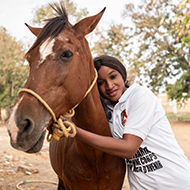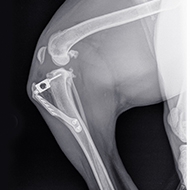More emphasis to be placed on private animal disease surveillance provision
SEVEN of the 14 AHVLA postmortem facilities are to close during 2014, with another to cease procedures in 2015.
The closures are the result of a new system of scanning surveillance for new and re-emerging animal disease to be introduced by the Government, which will apply across England and Wales and is a result of recommendations made by the Surveillance Advisory Group following public consultation.
AHVLA postmortem facilities at Aberystwyth, Newcastle, Luddington, Langford, Preston, Sutton Bonington and Truro, will close from April next year; some will retain regional laboratory and/or field services, others will close outright.
AHVLA surveillance will continue to be carried out from postmortem investigation centres in Bury St Edmunds, Carmarthen, Penrith, Shrewsbury, Starcross, Thirsk and, until 2015, Winchester.
A carcase collection service will be introduced for three years in areas where AHVLA postmortem facilities have been closed and no alternative provision is in place. Livestock keepers will be responsible for transporting carcases to the collection point, as is the situation now, with AHVLA funding the onward journey to a postmortem facility.
Under the new system, less emphasis will be placed on gathering intelligence from postmortems carried out at Government laboratories and more on "other sources", such as those carried out by private vets on-farm and those already performed in the poultry sector.
According to an AHVLA statement, the new system will be introduced to improve both the geographical and species-specific coverage of disease surveillance across England and Wales by making better use of expertise and resources of private vets, universities and the livestock industry.
“The current surveillance system has a good history of detecting disease threats such as the first cases of Schmallenberg and bluetongue, but we know improvements can be made to give us better coverage across England and Wales. The new model will improve the effectiveness of surveillance by making better use of the expertise of private vets, universities and the livestock industry as well as retaining the existing AHVLA veterinary network,” said Rupert Hine, AHVLA’s director of veterinary surveillance.
Better coordination of these alternative sources of intelligence will provide a more comprehensive threat picture to be drawn than is presently the case, the AHVLA states. However, removing postmortem facilities from certain geographical areas clearly calls into question the potential for increased risks.
Transporting diseased carcases over longer distances is one obvious area.
In reference to carcase collection and associated disease control, an AHVLA spokesman told MRCVSonline: "Other pathology providers may be available in those areas and many notifiable diseases are dealt with by private vets anyway. The quality of new processes will obviously have to be approved and monitored by AHVLA."
Areas of specialist knowledge will be developed in the remaining AHVLA centres, the spokesman said. An example is the Bury St Edmunds investigation centre, which will focus on poultry and pigs due to the high density in that area.
The move raises many questions about surveillance provision, with the BVA saying the aim must be to enhance the current system rather than simply reduce costs.
Commenting on the announcement, BVA President Robin Hargreaves, said:
"It is good practice to review systems with a view to improving
them, but we have said repeatedly that any changes to the veterinary
scanning surveillance system must not be based on cost alone. The cost
of disease outbreak far outweighs the cost of providing a robust
surveillance system.
"Elements of the announced changes are positive, such as the increased
focus on data collection, maintaining expert capacity, and efforts to
increase access to facilities across England and Wales, which is
something the SAG report highlighted as an essential requirement.
"However, the report acknowledges there are known risks and the
announcement raises many questions and challenges that will need to be
addressed as we receive more detail on the plans."






 Birmingham Dogs Home has issued an urgent winter appeal as it faces more challenges over the Christmas period.
Birmingham Dogs Home has issued an urgent winter appeal as it faces more challenges over the Christmas period.
